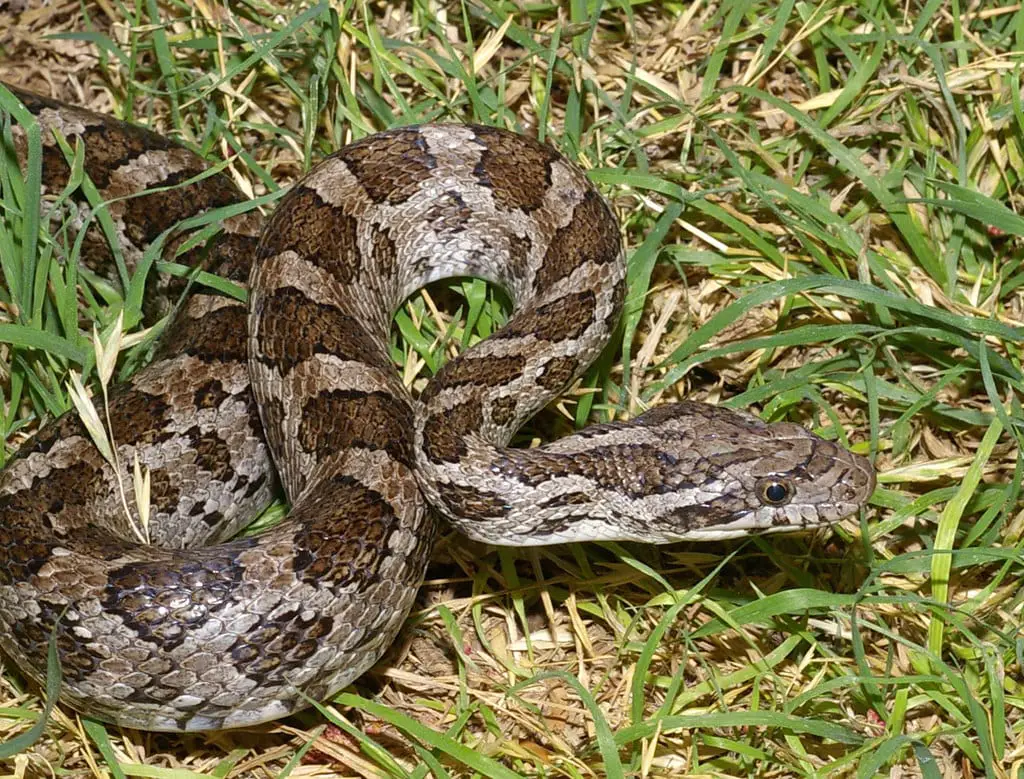Texas Rat Snake
The Texas rat snake, a fascinating creature native to the Lone Star State, has captured the curiosity of many reptile enthusiasts. This non-venomous snake, which is a subspecies of the black rat snake, thrives across central and eastern Texas. Its adaptability allows it to live comfortably in forests, grasslands, and even suburban areas. While some folks might get spooked by the sight of a snake, the Texas rat snake plays an essential role in controlling rodent populations, making it a natural pest controller.
Often mistaken for venomous snakes, the Texas rat snake has a knack for mimicking rattlers by vibrating its tail when threatened. This behavior, combined with its unique color variations, makes it an interesting subject for study. Whether you're a reptile enthusiast or simply curious about this slithering neighbor, there's plenty to learn about this remarkable creature.
From its impressive climbing abilities to its knack for sneaking into chicken coops, the Texas rat snake is full of surprises. In this guide, we'll explore its habitat, lifespan, behavior, and more. So, if you're ready to get acquainted with one of Texas's most intriguing reptiles, keep reading. You might just discover why this snake is so highly regarded in the animal kingdom.
What is the Texas Rat Snake Habitat?
The Texas rat snake tends to call the Lone Star State home, but its range stretches a bit further. You'll find these snakes not only in Texas but also in Louisiana, Arkansas, and Oklahoma. They're pretty flexible when it comes to choosing a place to live. Forests, grasslands, and suburban neighborhoods are all fair game for these adaptable critters.
Interestingly, the environment can affect their appearance. Snakes from the southern regions often sport a vibrant yellow hue, while those from the north are typically darker. This variation in coloration helps them blend into their surroundings, providing natural camouflage. It's almost like they have their own version of seasonal wardrobes, right?
Is the Texas Rat Snake Dangerous?
Now, let’s address the elephant—or should we say snake—in the room. Is the Texas rat snake dangerous? The short answer is no. This snake is non-venomous and poses little threat to humans. However, if it feels threatened, it might try to scare you off by vibrating its tail. Depending on what the tail hits, it can sound like a rattlesnake, which might give you a bit of a scare.
Still, the Texas rat snake isn't out to harm anyone. Instead, it's more interested in keeping rodents under control. If you happen to come across one, it's best to give it some space. Chances are, it's just trying to go about its business without causing any trouble.
How Long Do Texas Rat Snakes Live?
When it comes to lifespan, the Texas rat snake is quite impressive. In the wild, they usually live between 10 and 15 years. Some lucky individuals have even reached the ripe old age of 20. Of course, their longevity depends on several factors, such as predators and habitat conditions.
Interestingly, their diet plays a big role in their health and lifespan. These snakes are known to feast on rodents, birds, and eggs. A well-balanced diet, combined with a safe environment, can help them thrive for many years. It's kind of like how we humans need a good diet and safe living conditions to live long, healthy lives, isn't it?
Texas Rat Snake - Identification and Appearance
Identifying a Texas rat snake is relatively easy once you know what to look for. These snakes usually grow to about 4 to 6 feet in length, making them one of the longer snake species in Texas. Their bodies are adorned with dark brown or black blotches on a lighter brown or gray background.
One unique feature that sets them apart from other rat snakes is their gray head. While some subspecies might have red or orange markings, the Texas rat snake typically sports a gray head. This characteristic makes it easier to distinguish them from their cousins. It's kind of like how we use facial features to recognize people, right?
Texas Rat Snake - The Diet of a Texas Rat Snake
So, what exactly does a Texas rat snake eat? Well, they have quite the appetite for rodents, birds, and eggs. Their love for chicken eggs has earned them the nickname "chicken snake." This diet not only helps keep rodent populations in check but also provides them with the nutrients they need to grow and thrive.
Interestingly, Texas rat snakes are excellent climbers. They'll often scale trees to reach bird nests or eggs. This ability gives them access to food sources that other ground-dwelling predators might not reach. It's almost like they have their own version of a gourmet dining experience, you know?
Texas Rat Snake Behavior - What Makes Them Unique?
Behavior-wise, the Texas rat snake is quite fascinating. They're known for their ability to mimic venomous snakes when threatened, which is a clever defense mechanism. By vibrating their tails, they can create sounds that might make you think you're dealing with a rattlesnake.
Additionally, they're skilled climbers and hunters. Their ability to scale trees and snatch eggs from nests shows just how adaptable and resourceful they are. It's kind of like how we humans use tools to make our lives easier, except their "tools" are their natural abilities. Pretty cool, huh?
Where Can You Spot a Texas Rat Snake?
If you're hoping to spot a Texas rat snake, your best bet is to head to central and eastern Texas. These snakes are commonly found in forests, grasslands, and suburban neighborhoods. They're also known to inhabit areas of southern Louisiana and Arkansas.
One thing to keep in mind is that their range overlaps with other subspecies of rat snakes. This overlap makes it a bit tricky to pinpoint exact boundaries. So, if you're out exploring and come across a snake that looks like a Texas rat snake, it might just be one of its relatives. That's just the way nature works sometimes, right?
Final Thoughts on the Texas Rat Snake
In this guide, we've explored the fascinating world of the Texas rat snake. From its habitat and lifespan to its behavior and diet, there's so much to appreciate about this non-venomous serpent. Its adaptability, unique appearance, and clever defense mechanisms make it a standout in the animal kingdom.
Whether you're a seasoned reptile enthusiast or just someone with a passing interest in nature, the Texas rat snake is definitely worth learning about. So, the next time you're out in Texas or its surrounding areas, keep an eye out for this remarkable creature. You might just be surprised by what you discover. Anyway, isn't that what makes nature so exciting?

Texas Rat Snake Observance by Mark Donahew

Texas Rat Snake Care Sheet | Reptiles' Cove

South Texas Rat Snake